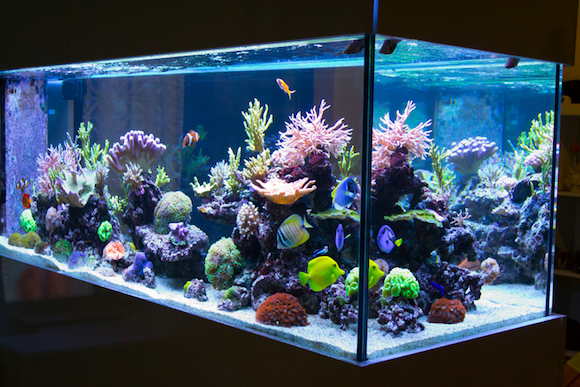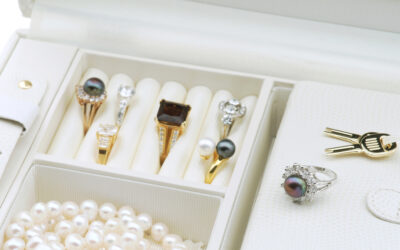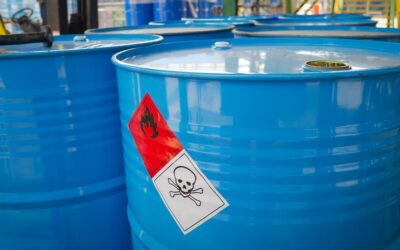Moving your fish and aquarium can be an arduous task according to pet care experts Doctors Foster and Smith.
If you plan ahead, handle the fish correctly and use proper supplies, your fish should make it to your new place with minimal disruption and in good health.
Follow these steps and moving your fish tank should go swimmingly:
Gather Your Supplies
Before you begin, you’ll need to gather a variety of supplies. Timing is critical when moving a fish tank, so be sure to have everything you could possibly need on hand to avoid complications.
- Several clean 5-gallon buckets
- Bubble wrap
- Plastic bags
- A fish net
- Pre-mixed salt water
- Ammonia removing product
- Insulated coolers
- Battery-operated air pump
- Siphon hose
Distance Dictates Method
If you’re moving an aquarium to a new spot in your home, net the fish and put them in a clean, 5-gallon bucket with “plenty of tank water,” according to Doctors Foster and Smith.
Scoop out invertebrates like crabs and snails with a clean, plastic container and place in the 5-gallon bucket. When moving less than an hour away, you can bag your fish individually the same way your pet store does and keep the fish in the dark to reduce stress.
If you’re moving a long distance, though, the process is more complex.
Preparing to Move
Doctors Foster and Smith recommends these steps:
- Discontinue feeding your fish two days before the move.
- Have a checklist of items you’ll need at your new destination such as pre-mixed saltwater or an ammonia-removing product.
- Acquire several clean, five-gallon buckets that weren’t used to hold chemicals or detergents.
- Pack the aquarium last, and move your fish separately.
Enlist Help
Never try to lift a big fish tank by yourself, says Dawn Casey-Rowe, who’s moved her fish twice. The glass is heavy, and moving an aquarium with an inch or two of water and rocks is dangerous. “You need to keep the tank stable and move gently to avoid damaging the tank or hurting yourself,” she says.
Wrap the tank carefully with bubble wrap to help prevent breakage.
Save and Reuse Water
Pour as much aquarium water as you can into clean, 5-gallon buckets for transport.
“Reusing water cuts the cycling time considerably once you restart the system and decreases the likelihood of a toxic ammonia spike,” according to Doctors Foster and Smith.
Mind Your Levels
During long transports, dissolved oxygen levels can drop in unfiltered, stagnant water. Water temperatures can also change rapidly, since the fish are in less water than when in the aquarium. Insulated coolers are ideal transport containers for fish because they help maintain water temperature and can be altered for required oxygen levels, says Ryan Ross, curator for Silverton Casino Aquarium.
“You can drill a small hole the size of airline tubing through the top of the cooler and attach a battery-operated air pump to keep the dissolved oxygen levels up,” he says.
Keep Nitrifying Bacteria Alive
In a closed system such as an aquarium, you have biological filtration taking place with nitrifying bacteria, which oxidize harmful components of fish waste and uneaten fish food in an aquarium. Keep your aquarium’s nitrifying bacteria wet and in a temperature-controlled environment, says Ross. If you have a pump on your aquarium with Bio-Balls or another type of filter media, that’s where the nitrifying bacteria live.
Here’s what Ross recommends:
- Fill another cooler with aquarium water and put the bio balls and/or bio wheel inside.
- For an under-gravel filter system with airlift tubes, nitrifying bacteria live in the gravel so keep only enough water in the aquarium to cover the gravel.
- Consult your local fish store if uncertain of your biological filtration type.
Set Up Your Aquarium First
Once you arrive at your new home, you’ll need to quickly get your aquarium set up and operating. According to Doctors Foster and Smith:
- Fill the aquarium with as much of the old water as you were able to save and top off with fresh water or pre-mixed saltwater.
- Get filters, heaters and other equipment running and add a bacterial additive to accelerate cycling.
- Add live plants and decorations and run appropriate tests to check water parameters.
Acclimate Your Fish
You’ll need to acclimate fish, invertebrates and live corals before putting fish back in to the aquarium. For instructions, read Doctors Foster and Smith’s acclimation procedure guidelines.




